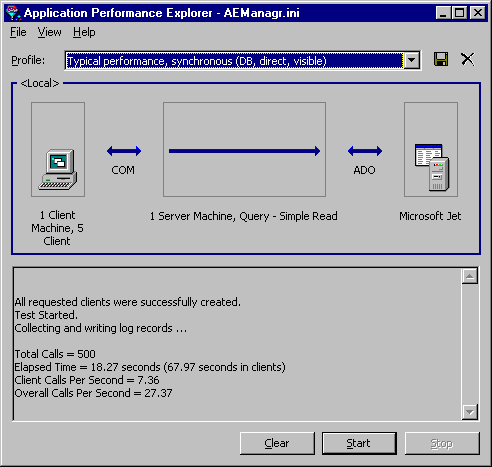
APE provides many built-in profiles for testing the remote execution, scheduling, and managing of objects both synchronously and asynchronously. Using preconfigured profiles, you can easily run some basic APE tests comparing the performance of some typical architectural designs.
While there are many test profiles to choose from, the three examples listed in the following table will acquaint you with some typical APE profile comparisons. You should read through each of the examples to see how the profile design choices affect the performance.
Note After running the following profile examples, you should experiment with workload increases such as doubling the number of calls or the number of clients. Such experimentation will show how the queuing and pooling design options allow your application to scale gracefully as the workload increases.
| Profile name | Description |
| Typical performance, synchronous (DB, direct, visible) | Defines a performance test using a synchronous connection that causes the client to wait. |
| Typical performance, synchronous (DB, Pool, visible) | Defines a performance test that uses a synchronous connection with object pooling. |
| Typical performance, asynchronous (DB, Job, visible) | Defines a performance test for a scalable, robust application using asynchronous connections, queuing, and object pooling. |
The Application Performance Explorer implements synchronous connections as a direct request from a client application to an object that lives on a remote network server. Because the connection is synchronous, the client application waits for the task to be complete, and is blocked until the server returns.
One of the limitations of the direct synchronous approach is the overhead involved in starting the worker and service objects. When a client is done with a worker, both the worker and service are destroyed.

In this profile there are five client processes with a 0 millisecond call delay on 100 calls per client, connected directly through one server machine to the Microsoft Jet database using ADO.
For this test run, the Overall Calls Per Second is 27.4 calls.